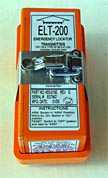
Kannad 406MHz ELT in a Socata TB20GT
This article describes the installation of the above ELT in a Socata TB20GT aircraft.
Why Kannad?
On TB GT aircraft, Socata used to fit an Artex ELT-200

which is 121.5+243MHz. Every GT aircraft was prewired for this unit - even European-market ones which generally were not allowed to carry an ELT at the time. Current European regulation increasingly requires a 406MHz unit (in practice this means 121.5+406) and while some countries are happy with a portable unit, the trend is to mandate a fixed one so every owner will have to deal with this sooner or later.
The most "obvious" replacement for the Artex ELT-200 is the Artex ME-406 (installation manual)
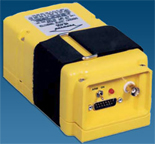
which claims to fit onto the same mounting points. Also, according to the Artex data sheet and emails I've had with them, this unit should use the existing ELT-200 aircraft wiring and instrument panel switch, but this information turned out to be false; the ME-406 requires a minimum of 4 wires plus ground and one extra wire is thus required which, in the TB20, requires the two RH seats to be removed, the trim removed and it's a significant job. The Socata wiring is a 3-core plus shield cable and one solution would be to use the shield as the 4th conductor but I have not managed to get Artex to supply information on what the signals do so it was not possible to work out which of the four connections could be safely run through the shield. Anyway, it isn't a good idea because the external insulation could be abraded to the airframe somewhere...
Many older TB20s were custom wired for the old Artex 110-4 and these installations reportedly have enough wires for the ME-406.
Fortunately there are other ELTs. The French-made Kannad 406-AF COMPACT data sheet
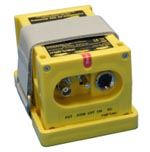
definitely uses just 3 wires, so Socata's 3-core plus shield cable is usable directly. The pricing is comparable too, even after allowing for Kannad pricing the switch and antenna separately whereas Artex seem to sell a whole kit.
Kannad Installation
The Kannad unit is similar in size to the Artex ELT-200 but the mounting holes in the baseplate are not quite in the same places: Artex Kannad. The plastic retaining base which comes with the Kannad therefore needs four new holes drilled; these unfortunately intersect the existing holes and the best way is to use a turret mill to place both the screw head counterbores and the holes in the right x,y coordinates
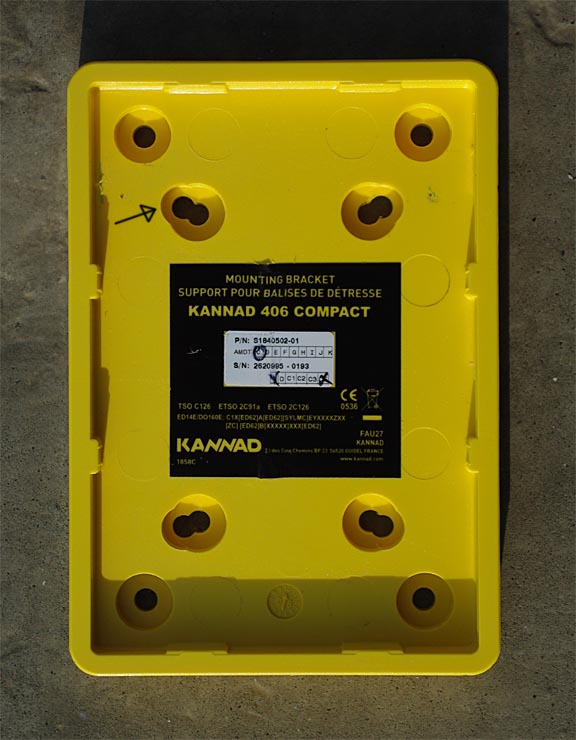
Another way would be to fabricate an adaptor plate, from an approved aluminium (probably 3-5mm thick) with flush rivet nuts (hank bushes) placed at the positions of the four outermost holes.
However, shortly after the above modification was done, Kannad introduced a mounting base modified exactly as I had done.....
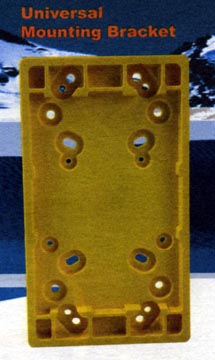
plus some additional holes. This base was obtained from Kannad and the installation was done with it instead of the original one.
The instrument panel switches differ in appearance

but their overall front panel dimensions, mounting hole sizes, and the four mounting screw hole locations are identical which saves hacking the instrument panel.
The ELTs' signal connectors (which go onto the cable harness interconnecting the instrument panel switch to the ELT) are all different. On the switch, Artex uses a cheap vehicle-type connector whereas the Kannad switch has a DB9. On the ELT, Artex uses a cheap circular connector which can easily become unlatched whereas Kannad use a much better quality circular connector with a screw-on retaining ring. In fairness though, the old ELT-200 was a cheap ELT, costing about $500.
The RF connectors are 50 ohm BNC on both units so this cable can be left unchanged.
The whip antennae are different (243MHz needs a different antenna to 406MHz) but fit into the same single mounting hole and use a single mounting nut; the Kannad antenna is shown below

A reinforcing plate is required in both cases and the TB20GT already has a plate in the right place. The two antennae are very similar.
Kannad Wiring
The existing Socata TB GT ELT wire (3 cores plus shield) is simply re-used as follows:
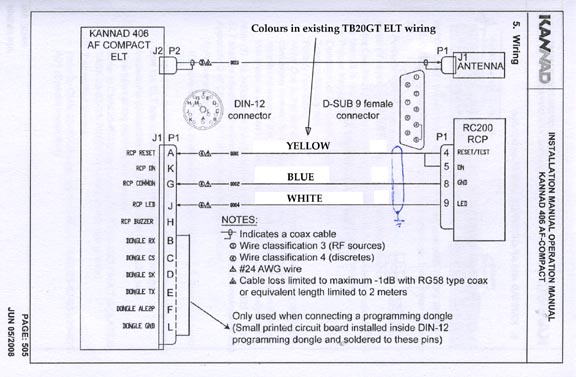
The three wires could of course have been used in any order for the three Kannad signals. The shield is left undisturbed; it is grounded to the airframe at the ELT end and possibly also at the instrument panel end, which is OK. The Kannad installation manual does not even require a shielded cable.
There is a slight complication in that the existing Socata ELT wiring is a few cm too short to reach the Kannad ELT, by the time the existing Artex multipole connector is removed and the Kannad one fitted. The 3 wires have to be extended, as the pic below shows
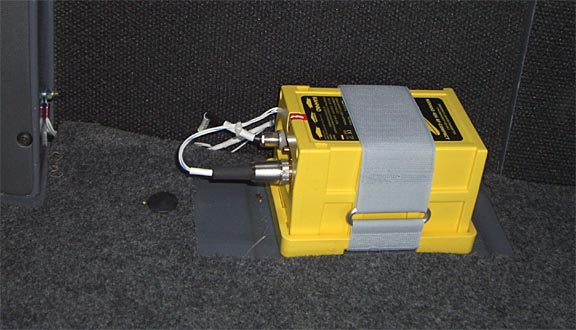
The RF cable is fine at its current length.
The whole job takes a few hours.
The Artex ELT can be sold on the U.S. avionics section of Ebay, though one doesn't get a lot for it. Obviously it helps if you can sell it with the original 8130-3 or JAR-1/EASA-1 form.
This is a comparison of the Artex ELT-200 and the Kannad 406 Compact
Other ELTs
There are a number of other brands but I did not investigate them in depth. An important requirement is to use the existing instrument panel hole, and the existing wiring.
The larger tri-band (121.5+243+406) ELTs
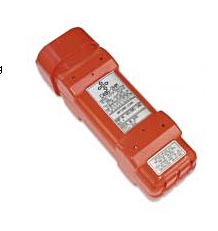
which were popular a few years ago are not worth installing because 243MHz monitoring ceased in 2009, and they need an adaptor bracket to be made which some avionics installers like to turn into a major certification project... They also cannot use the simple whip antenna which complicates the installation further. Due to the 243MHz cessation, most of them are discontinued.
One possible enhancement would be an ELT which accepts GPS data input and radiates the last (pre-crash) position; these cost a bit more but would require quite a bit more wiring labour because the only access to the GPS (NMEA) data stream is from the KLN94, at the back of the instrument panel centre stack.
Testing
The installed ELT is tested for its 121.50 emission (tune the radio to 121.50 and follow the instructions in the manual) but one does not test the 406MHz part. Kannad seem to offer some kind of online 406MHz test facility and a voucher is included in the package; I need to check this out...
ELT Registration
Finally, before flight, a 406MHz ELT needs to be registered with an appropriate registration authority, because it transmits an aircraft-specific code which includes the aircraft tail number (e.g. N1234XY or G-ABCD). If an alarm is detected, they initially phone some pre-registered number(s) to check for a false alarm and only then is the search/rescue process activated.
For the UK, the registry is here.
Unfortunately, my ELT was purchased from the USA and despite instructions it turned out to have been coded for the USA, not the UK. The above UK registry would not accept the registration so I registered it using the U.S. NOAA registry. This website seems to work fine - certainly for an N-number. I suspect it would not accept a G-number for example.
Update 3/2016: The FAA Chief Counsel has issued this ruling on ELT installation which suggests that the installation is not a Major Alteration. This is very helpful.
Last edited 29th March 2016
Any feedback, reports of dead links, corrections or suggestions much appreciated:
Contact details